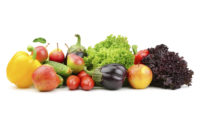The latest IRI Consumer Connect survey, released by IRI, Chicago, finds that consumers’ financial outlook has remained virtually unchanged during the past year. This conservative mindset has contributed to the CPG industry getting off to a slow start in 2018, but predictions for the remainder of the year are favorable.
“The Tax Cut and Jobs Act was passed at the end of 2017, and the expectation was that extra income from lower withholdings would spur spending,” says Susan Viamari, vice president of thought leadership. “Only 19% of consumers we surveyed said they expect to spend more as a result of the tax cut, so the CPG industry should not expect to be seeing a major boost. During the first quarter, the CPG industry saw low-level growth, with price increases driving dollar sales growth and edibles faring slightly better than the industry as a whole. The good news is that economic expectations for the remainder of the year are positive. We found that consumers want food and beverage solutions that will help them advance their nutritional goals, and they are willing to pay for the extra benefits. CPG marketers can really drive growth of premium products if they truly understand what is most important to consumers.”
Consumers remain shaky about financial health
Results from the Q1 2018 IRI Consumer Connect survey reveal that there has been essentially no change in consumers’ financial outlook during the past year. For instance, 44% of consumers said their household finances are strained in Q1 2018, compared to 45% in Q1 2017. And, 29% of consumers are having difficulty affording needed groceries in Q1 2018, compared to the exact same number in Q1 2017. Finally, 47% are making sacrifices to make ends meet in Q1 2018, compared to 50% in Q1 2017.
To ease their struggles, shoppers are embracing a wide range of strategies, including comparison shopping, brand switching and price shopping. Among the most prevalent strategies (total, Millennials, Generation X, baby boomers, seniors):
- Buy private label options: 85%, 91%, 91%, 83%, 79%
- Try new, lower-priced brands: 74%, 85%, 82%, 75%, 57%
Food and beverage trends
While leading the way in CPG industry growth, the edibles sector only saw modest monthly dollar sales change (3%, 2.0%, 2.3%, respectively) and monthly unit sales change (1.3%, 0.8%, 1.1%) during the first three months of 2018. All regions across the United States showed positive growth in edibles. Leading the way were the West, which increased sales by 3.5%, and the Southeast, which increased by 3.2%, for the 13 weeks ending March 25.
Beverages — both alcoholic and non-alcoholic — and deli cheese were top-performing departments during the first quarter. In the perimeter of the store, pound sales fell 1.8%, but dollar sales increased 1.4% compared to the prior year. Deli cheese is the only category that saw positive pound growth (+0.6%). Deli prepared (-6.8%), deli meat (-1.4%), produce (-1.4%), meat (-1.3%) and seafood (-0.5%) all saw pound sales decrease.
Edible spending has been volatile, but largely positive across all income segments during the past year. Hispanic shopper spending lags behind other populations, and younger Millennials’ spending has stood out compared to other generations, especially seniors, who struggled in Q1 2018.
Sunnier outlook ahead
The U.S. economic outlook is healthy for the remainder of 2018. Key indicators point to GDP growth surpassing 5% for the first time in five years, and the unemployment rate is expected to end the year at 3.8%.
For the CPG industry, premium products offer opportunity to drive basket and margin growth. In fact, 25% of consumers say they expect to buy more premium products in the next six months. There is an even greater opportunity with wealthier households. Thirty-five percent of households earning $100,000 and more say they will spend more on premium products this year.
“Thirty-six percent of consumers say they will spend more money on products that offer benefits beyond basic nutrition,” says Viamari. “And, 29% will spend more on natural and organic solutions. So, know your customers inside and out, and tailor your offerings to meet their needs. By personalizing your products and messaging, you will hit the right note with consumers, encouraging them to open their wallets in support of your brands.”

